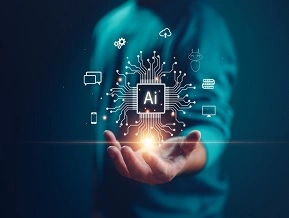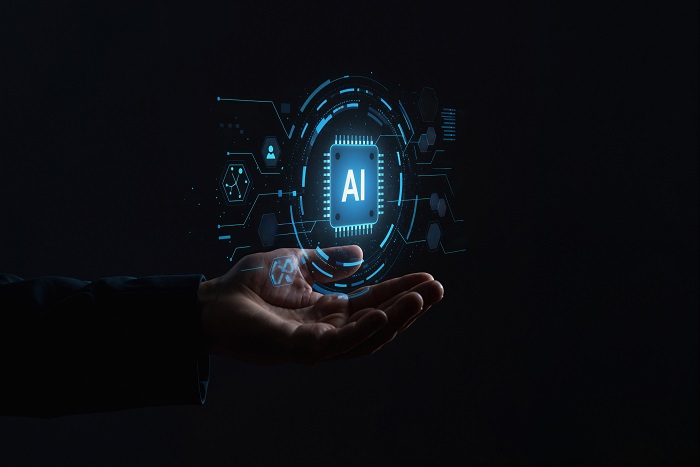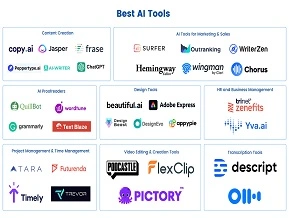Testing Tools and AI: Artificial intelligence is Shaping Software Quality Assurance
How Have Testing Tools Evolved with the Rise of AI in Software Quality Assurance?
The evolution of testing tools and AI has dramatically transformed the landscape of software quality assurance (QA). Traditionally reliant on manual testing methods, the industry has witnessed a significant shift toward automation, propelled largely by advancements in AI technologies. This progression not only enhances efficiency but also improves accuracy in identifying software defects.
Shift from Manual to Automated Testing
Initially, software testing depended heavily on manual efforts, where testers executed predefined test cases without the support of sophisticated tools. This approach was time-consuming, prone to human error, and limited in scope. With the advent of automation tools, repetitive tasks were delegated to machines, accelerating testing cycles and increasing coverage. However, these early automation tools lacked the intelligence to adapt or learn from previous results, limiting their effectiveness in complex scenarios.
Introduction and Influence of AI in QA Processes
The integration of AI testing tools into QA processes marks a pivotal shift. AI-powered tools leverage machine learning, natural language processing, and data analytics to analyse vast amounts of test data, predict potential failure points, and even generate test scripts autonomously. These intelligent tools continuously learn from new data, improving test accuracy and reducing maintenance efforts. The introduction of AI has also enabled predictive analytics in QA, helping teams proactively address issues before they escalate.
Timeline and Key Changes Driven by AI Technologies
The timeline of QA tools evolution began with simple scripted automation in the early 2000s. By the 2010s, more advanced frameworks supporting continuous integration emerged. The recent rise of AI testing tools around 2018 onwards introduced features like self-healing tests, automated test generation, and intelligent bug detection. Today, AI-driven QA tools are integral to DevOps and Agile workflows, facilitating faster releases and higher software quality.
What are AI Testing Tools and How Do They Work?
In the modern software development landscape, testing tools and AI have become essential components for ensuring high-quality applications. AI testing tools are advanced software solutions that leverage artificial intelligence to automate, optimize, and enhance the software testing process beyond the capabilities of traditional methods.
Definition and Explanation of AI Testing Tools
AI testing tools are platforms or frameworks that utilize AI technologies such as machine learning, natural language processing (NLP), and computer vision to perform various testing activities. Unlike conventional tools that require manual scripting and rigid test case execution, AI testing tools can analyse large datasets, recognize patterns, and make intelligent decisions about what and how to test. This allows for more adaptive and efficient testing processes that can evolve with the software under development.
Core Technologies Used
At the heart of AI testing tools lie core technologies including machine learning, which enables systems to learn from historical data and improve over time; natural language processing, which helps tools understand human language to generate or interpret test cases; and computer vision, which allows the automation of UI testing by recognizing visual elements on screens. These technologies combine to provide capabilities such as test script generation, defect prediction, and anomaly detection.
How AI Testing Tools Function Differently from Traditional Tools
Traditional testing tools follow predefined scripts and are limited in handling unexpected scenarios. In contrast, AI testing tools dynamically adapt by learning from ongoing test results and application behaviour. They can self-heal broken tests, prioritize test cases based on risk, and automate complex exploratory testing. This intelligence significantly reduces manual effort and increases the accuracy and speed of the testing lifecycle.
By integrating AI testing tools into development workflows, organizations can achieve faster releases with improved software quality and reduced costs.
How are Testing Tools and AI Improving Software Quality Assurance Today?
The integration of testing tools and AI has revolutionized software quality assurance (QA), delivering significant improvements in speed, accuracy, and scalability. These advancements enable organizations to meet the demands of faster development cycles and increasingly complex software systems.
Real-World Benefits: Speed, Accuracy, and Scalability
AI-powered testing tools accelerate the QA process by automating repetitive tasks that would traditionally consume extensive manual effort. Automated test execution and intelligent test case generation allow for rapid validation of code changes, significantly reducing the time needed for regression testing. Accuracy is enhanced through AI’s ability to detect subtle anomalies and patterns that might be missed by human testers. Moreover, AI-driven tools can scale effortlessly to accommodate growing test suites and complex applications without proportional increases in resources.
Examples: Intelligent Test Case Generation and Self-Healing Scripts
One notable example of AI’s impact is intelligent test case generation, where machine learning algorithms analyse application behaviour and user interactions to create relevant test scenarios automatically. This reduces the dependency on manually written test cases and ensures better coverage. Another breakthrough is self-healing test scripts—AI tools automatically detect changes in the application’s UI or workflows and adjust test scripts, accordingly, minimizing test failures caused by minor updates and reducing maintenance overhead.
Enhanced Decision-Making with AI-Powered Analytics
AI also plays a crucial role in decision-making within QA processes. By analysing vast amounts of testing data, AI-powered analytics provide actionable insights such as identifying high-risk areas in the codebase, predicting potential defects, and prioritizing testing efforts accordingly. This data-driven approach allows teams to focus on critical issues, improving overall software quality and reliability.
In summary, the fusion of AI with testing tools is transforming software QA by making it faster, smarter, and more efficient.
Which AI Testing Tools Are Leading the Market Right Now?
In today’s fast-paced software development environment, testing tools and AI have become crucial for maintaining high-quality applications. Several AI testing tools stand out in the market for their innovative features, scalability, and adaptability across industries.
Overview of Popular AI Testing Tools
Some of the leading AI testing tools include Testim, Applitools, Fictionize, and Mabl. Testim focuses on accelerating test creation and maintenance through AI-powered self-healing capabilities. Applitools specializes in visual testing, using AI-driven visual validation to detect UI anomalies across different devices and browsers. Functionize leverages machine learning to enable cloud-based test automation that adapts to application changes seamlessly. Mabl combines AI-driven test automation with continuous integration, making it a popular choice for Agile and DevOps teams.
Key Features and What Sets Them Apart
Each tool has unique strengths. Testim’s self-healing tests automatically adjust to minor application changes, reducing maintenance time. Applitools excels in visual testing by comparing screenshots intelligently rather than relying on brittle pixel-to-pixel matching. Functionize offers natural language processing for creating tests without complex coding, making it accessible to non-technical users. Mabl integrates end-to-end testing with performance monitoring and offers predictive analytics to identify potential issues early.
Suitability for Different Testing Needs and Industries
These AI testing tools cater to diverse testing needs. For example, Applitools is ideal for companies emphasizing user experience and UI consistency, such as e-commerce and financial services. Testim and Mabl fit well in fast-paced Agile environments where rapid test creation and maintenance are critical. Functionize’s cloud-native architecture suits enterprises looking for scalable solutions without heavy infrastructure investments.
In conclusion, the current market leaders in AI testing tools provide flexible, intelligent solutions tailored to various industries and testing challenges.
How are Companies Using AI Testing Tools in Real-World QA Environments?
The adoption of testing tools and AI is reshaping software quality assurance across various industries, enabling companies to deliver more reliable and efficient applications.
Industry Use Cases
In finance, AI testing tools help manage complex regulatory requirements by automating extensive compliance testing and reducing human error. Healthcare organizations use AI-driven test automation to ensure the security and functionality of patient management systems, where accuracy is critical. In e-commerce, AI testing tools optimize user experience by rapidly testing different devices and user flows, ensuring smooth transactions and reducing downtime during peak shopping seasons.
Integration with DevOps and CI/CD Workflows
Companies are increasingly integrating AI testing tools into their DevOps and Continuous Integration/Continuous Deployment (CI/CD) pipelines. This integration enables automated, real-time testing as part of every code commit, accelerating feedback loops and reducing time to market. AI tools enhance these workflows by prioritizing test cases based on risk analysis and automatically adapting test scripts to application changes, supporting seamless and uninterrupted delivery cycles.
Success Stories and Measurable QA Improvements
Several organizations have reported measurable improvements after implementing AI testing tools. For instance, a global financial services firm reduced regression testing time by 50% using AI-powered self-healing tests, significantly lowering maintenance costs. A healthcare provider improved defect detection rates by 30%, leading to safer patient software systems. An e-commerce giant enhanced test coverage and reduced release cycles from weeks to days, improving customer satisfaction and revenue.
In summary, companies across industries are leveraging AI testing tools to boost QA effectiveness, integrate testing deeply into development workflows, and achieve tangible business outcomes.
What Challenges Do AI Testing Tools Face in Software QA?
While AI and testing tools have brought tremendous advancements to software quality assurance, they also face several challenges that organizations must address to fully leverage their potential.
Technical Limitations and Data Dependency
AI testing tools rely heavily on large volumes of high-quality data to train machine learning models effectively. Inadequate or biased datasets can lead to inaccurate predictions and missed defects. Additionally, AI algorithms may struggle with complex, dynamic applications where changes occur rapidly, limiting their ability to adapt without frequent retraining. The “black box” nature of some AI models also creates challenges in understanding why certain decisions or test results are produced.
Ethical Concerns and Explain ability
The use of AI in QA raises ethical questions, especially related to transparency and accountability. It is often difficult to explain AI-driven testing outcomes to stakeholders, making it challenging to trust and validate the results. This lack of explain ability can hinder regulatory compliance, particularly in industries like healthcare and finance where audit trails and clear justifications are required.
Organizational Adoption Barriers and Skill Gaps
Beyond technical issues, many organizations face hurdles in adopting AI testing tools due to skill gaps and resistance to change. QA teams may lack expertise in AI and machine learning, necessitating additional training or hiring specialized talent. Moreover, integrating AI tools into existing workflows and legacy systems can be complex and costly. Cultural resistance to relying on AI-driven automation instead of manual testing practices may slow down adoption efforts.
In conclusion, while AI testing tools offer substantial benefits, overcoming these technical, ethical, and organizational challenges is essential for successful implementation and maximizing their impact on software quality assurance.
What Does the Future Hold for Testing Tools and AI in QA?
The future of testing tools and AI in software quality assurance is poised to bring transformative changes that will redefine how testing is conducted and managed.
Emerging Trends: Autonomous Testing, Generative AI, and Adaptive Test Planning
One major trend is autonomous testing, where AI-powered tools will independently design, execute, and maintain tests with minimal human intervention. Generative AI is expected to revolutionize test creation by automatically generating test cases and scripts based on requirements or user behaviour. Adaptive test planning will use real-time analytics and machine learning to prioritize tests dynamically, focusing efforts on the most critical areas and optimizing resource allocation.
Role of AI in Continuous Quality Improvement
AI will play a central role in continuous quality improvement by providing real-time insights into application health, predicting defects before they occur, and enabling proactive remediation. Integrated within DevOps and CI/CD pipelines, AI-driven testing will ensure faster feedback loops and higher software reliability. Continuous learning capabilities of AI models will further enhance test accuracy and reduce maintenance overhead, making quality assurance a seamless, ongoing process.
Skills Future QA Professionals Will Need
As AI reshapes QA, professionals will need to develop new skills beyond traditional testing. Expertise in AI and machine learning concepts will become essential for designing and managing intelligent testing frameworks. Additionally, skills in data analysis, programming, and understanding of AI ethics and explain ability will be critical. QA professionals must also cultivate adaptability and collaborative skills to work effectively alongside AI tools and cross-functional teams.
In summary, the future of testing tools and AI promises smarter, faster, and more efficient QA processes, driven by cutting-edge technologies and evolving skillsets.
Conclusion
LAI offers comprehensive online courses that focus on AI’s application in software testing and quality assurance. Through hands-on projects and exposure to real-world testing tools and AI, learners gain practical experience with popular AI-driven testing platforms and methodologies. These courses teach key concepts like machine learning, test automation, and AI-powered analytics, preparing students to effectively integrate AI into QA workflows. By completing LAI’s programs, learners can confidently apply their skills in real QA roles, driving improved software quality and efficiency in professional environments.












